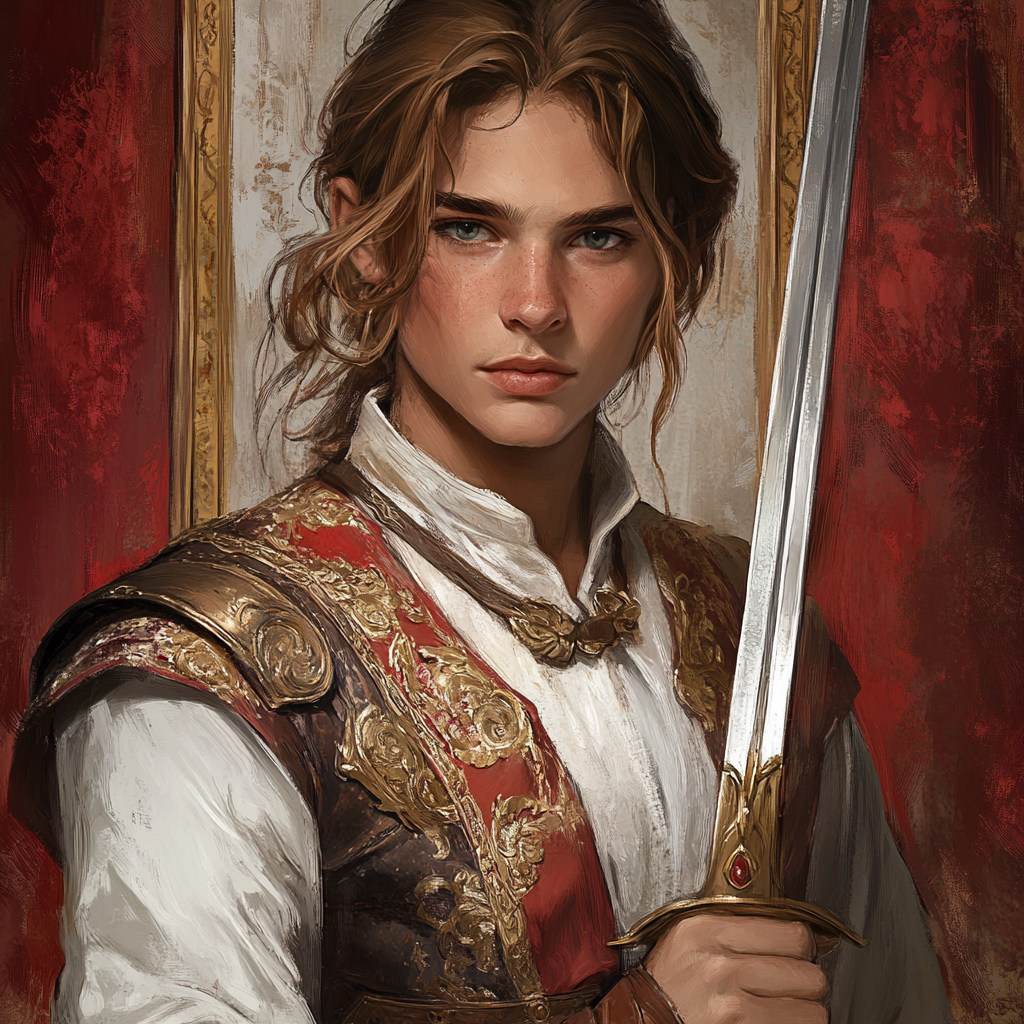Disclaimer: This post contains affiliate links. This means I may earn a commission should you choose to sign up for a program or make a purchase using my link.
The young adult (YA) fantasy genre is a captivating world of magic, adventure, and unforgettable characters. However, with countless YA fantasy novels on the shelves, making your story stand out can feel like a monumental challenge. How do you create a book that captures the imagination of readers while offering something fresh and memorable?
In this guide, we’ll explore proven strategies for crafting a YA fantasy novel that rises above the competition. From building immersive worlds to developing compelling characters, you’ll learn how to infuse originality into your story and connect with your audience on a deeper level.

Understanding the YA Fantasy Audience
Before diving into the writing process, it’s essential to understand your target audience. YA readers are typically between 12 and 18 years old, but the genre has a broad appeal that often attracts adults. YA fantasy readers crave stories that allow them to escape into magical worlds while grappling with themes that resonate with their real-life experiences.
What YA Fantasy Readers Want
- Immersive Worlds: Unique, vivid settings that transport them to another reality.
- Relatable Characters: Protagonists who reflect the struggles, triumphs, and emotions of adolescence.
- Themes of Growth: Stories that explore identity, self-discovery, and the journey to adulthood.
- Adventure and Stakes: High-stakes conflicts and thrilling adventures that keep them hooked.
- A Fresh Twist: A unique spin on classic fantasy tropes or an innovative premise.
By understanding these desires, you can tailor your story to engage readers and leave a lasting impression.
Step 1: Craft a Unique Premise
A strong premise is the foundation of any standout YA fantasy novel. While classic tropes—like chosen ones, magical schools, or forbidden love—are popular, the key is to present them in a new and unexpected way.
Tips for a Unique Premise
- Blend Genres: Combine fantasy with elements of mystery, romance, or dystopia to create something fresh.
- Ask “What If?”: Use this question to spark ideas. For example, “What if a kingdom’s magic was tied to the emotions of its people?”
- Subvert Tropes: Take a familiar trope and turn it on its head. For example, instead of a hero destined to save the world, what if they were prophesied to destroy it?
- Draw from Personal Interests: Incorporate hobbies, cultures, or historical events that fascinate you. Authentic passion often leads to originality.
Example: Sabaa Tahir’s An Ember in the Ashes combines Roman-inspired military oppression with a richly imagined magical world, creating a unique and gripping premise.
Step 2: Build a Vivid, Immersive World
World-building is a cornerstone of fantasy, and your setting should feel as alive as your characters. A richly detailed world not only captivates readers but also gives your story depth and authenticity.
Key Elements of World-Building
- Geography and Environment: Define the physical setting of your story—cities, forests, mountains, or oceans—and how they shape the culture and people who live there.
- Magic System: If your story features magic, establish clear rules and limitations. What fuels the magic? What are its costs and consequences?
- History and Lore: Develop a backstory for your world. What historical events or myths shape its present?
- Social Structures: Consider class systems, governments, and cultural norms. How do these influence the characters’ lives?
- Unique Details: Add distinctive elements that make your world memorable, such as unusual flora and fauna, festivals, or customs.
Avoid Overloading Readers
While world-building is vital, avoid overwhelming your audience with too much information at once. Weave details organically into the narrative, using character interactions and plot developments to reveal your world.
Example: Leigh Bardugo’s Shadow and Bone introduces the Grisha magic system and the divided kingdom of Ravka through the protagonist’s journey, keeping readers intrigued without info-dumping.

Step 3: Create Compelling Characters
YA readers crave characters they can connect with. Heroes and villains who feel real, flawed, and emotionally resonant. Your characters are the heart of your story, and their struggles, relationships, and growth will keep readers invested.
Building Relatable Protagonists
- Give Them Flaws: Perfect characters are unrelatable. Give your protagonist insecurities, fears, or mistakes that make them human.
- Create Clear Goals: What does your protagonist want, and why? Their motivation should drive the plot and resonate with readers.
- Explore Their Arc: YA fantasy often focuses on themes of self-discovery and growth. Show how your protagonist evolves over the course of the story.
Writing Memorable Villains
- Give Them Depth: Avoid one-dimensional villains. Give them motivations, backstories, and even sympathetic qualities.
- Make Them Personal: Tie the villain’s actions directly to the protagonist’s journey, creating a deeply emotional conflict.
- Show Complexity: Consider villains who blur the lines between good and evil, forcing readers to question their own morality.
Example: Victoria Aveyard’s Red Queen features Mare Barrow, a flawed yet determined protagonist navigating a world of political intrigue and betrayal, while the antagonists challenge her beliefs and drive her growth.
Step 4: Develop a Gripping Plot
A standout YA fantasy novel balances character-driven storytelling with a fast-paced, engaging plot. Your story should have stakes high enough to keep readers invested, twists that surprise them, and a climax that leaves them breathless.
Structuring Your Plot
- Start Strong: Hook readers with a dramatic inciting incident that sets the story in motion.
- Raise the Stakes: Continuously escalate the tension by introducing new challenges or complications.
- Add Twists: Keep readers guessing by incorporating unexpected twists and reveals.
- Build to a Climactic Showdown: The climax should be the culmination of your protagonist’s journey and the resolution of the central conflict.
- End with Impact: Give readers a satisfying resolution while leaving room for reflection or a sequel.
Balancing Action and Reflection
While action scenes are thrilling, moments of reflection and character development are equally important. Use these quieter moments to explore emotions, relationships, and internal conflicts.
Example: In Throne of Glass by Sarah J. Maas, the plot is a perfect blend of high-stakes competition, political intrigue, and personal growth, keeping readers hooked from start to finish.
Step 5: Incorporate Themes That Resonate
YA fantasy often explores universal themes that resonate with readers, such as identity, power, love, and sacrifice. Integrating meaningful themes into your story adds depth and emotional resonance.
Common YA Fantasy Themes
- Coming of Age: The journey from adolescence to adulthood, filled with self-discovery and growth.
- Rebellion and Justice: Fighting against oppressive systems or seeking justice for wrongs.
- Friendship and Loyalty: Exploring the bonds between characters and the sacrifices they make for one another.
- Identity and Belonging: Struggles with identity, acceptance, and finding one’s place in the world.
Weave Themes Subtly
Avoid preaching or being overly explicit about your themes. Instead, let them emerge naturally through your characters’ actions, decisions, and experiences.
Example: Children of Blood and Bone by Tomi Adeyemi explores themes of oppression, identity, and resilience through a richly imagined fantasy world inspired by West African culture.

Step 6: Add a Unique Voice
Your writing style and narrative voice play a significant role in setting your YA fantasy apart. A unique voice can captivate readers and make your story unforgettable.
Tips for Developing Your Voice
- Experiment with Perspective: First-person narration can create intimacy, while third-person omniscient offers a broader view of your world.
- Infuse Personality: Whether it’s humorous, poetic, or gritty, let your natural writing style shine.
- Match Tone to Story: Ensure your tone aligns with your story’s mood, whether it’s dark and epic or light and whimsical.
- Use Vivid Imagery: Paint pictures with your words to bring your world and characters to life.
Example: Laini Taylor’s lyrical prose in Daughter of Smoke and Bone sets the tone for a hauntingly beautiful tale of magic, love, and war.
Step 7: Avoid Common Pitfalls
YA fantasy is a competitive genre, and certain missteps can hinder your story’s success.
- Clichéd Tropes: Avoid overused tropes like love triangles or the “special snowflake” protagonist without adding a fresh twist.
- Info-Dumping: Reveal your world-building gradually, rather than overwhelming readers with large chunks of exposition.
- Flat Side Characters: Give your supporting cast distinct personalities and arcs to enrich the story.
- Pacing Issues: Balance action, world-building, and character development to maintain a steady, engaging pace.
Conclusion: Bringing It All Together
Writing a YA fantasy novel that stands out requires a blend of creativity, authenticity, and attention to detail. By crafting a unique premise, building an immersive world, and creating relatable characters, you’ll set the stage for a story that captivates readers. Add a gripping plot, resonant themes, and your unique voice, and you’ll have a YA fantasy novel that not only stands out but leaves a lasting impact.
Now, it’s your turn to bring your story to life. What’s your favorite YA fantasy novel, and how did it inspire you? Share your thoughts in the comments below, and don’t forget to share this guide with your fellow writers! As always, Happy Writing!

Newsletter Sign-Up